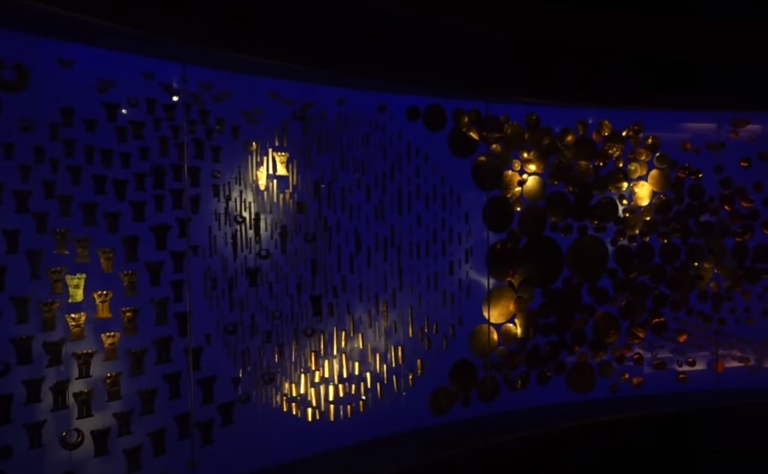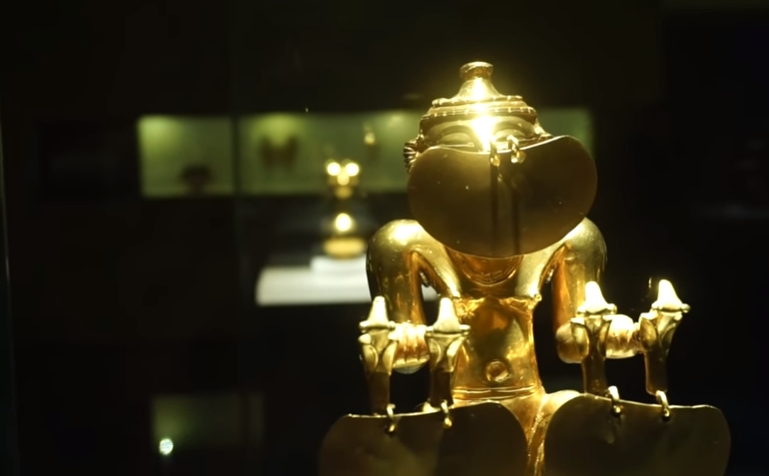If you go to Bogotá you have to visit this impressive museum, which houses a unique collection in the world.
It is mostly made up of gold objects, but they also have stone, ceramic, textile and bone objects.
It consists of four exhibition rooms and an exploration room, which will allow you to learn about the customs, habits, myths and legends of the civilization that inhabited these lands before the colonization of the Spanish.

On the second floor are rooms 1 and 2. The first called «People and Gold in Pre-Hispanic Culture», takes us on a journey through the use of this metal related to social, political and religious life.
The second is «The work of metals», which describes how metals worked, their foundry, carvings, etc., based on the work of archaeologists and researchers who dedicated themselves to studying the subject.

In addition to the posters, there are practical educational videos that allow visitors to understand the techniques used.
On the upper floor there are two other rooms, the «Cosmology and Symbolism» room, where you can appreciate the importance of religious life, the meaning of objects and learn a little more about the political and social life of ancient civilizations.
- There are many objects used by shamans, including one of the museum’s two main pieces, the «Poporo Quimbaya», carved in 301 BC.

This object was one of the first acquired by the Museum and the one that gave rise to this great collection.
The poporos are hollow containers with a small entrance hole through which they introduce a toothpick wet with saliva to remove the lime that the Indians themselves threw and which, mixed with the coca leaves they chewed, helped to extract the alkaloids from them.
In front of this room is «La Ofrenda» which has the second fundamental piece of the museum which is the «Balsa Muisca», which represents the legend of El dorado.

According to this belief, the «heir», son of the cacique, was covered in powdered gold and mounted on a raft with gold objects around him, he was led to the middle of a lagoon where a ceremony was performed in which he bathed taking off gold from the body and objects were thrown into the deep waters.
This interests you:
The Spanish chased this legend across a vast territory in search of treasure.
This ceremony was performed in several lagoons, the most famous in Bogotá is the Guatavita lagoon, which can be visited today.
The Muisca Raft is the confirmation of this legend, it is a goldsmith’s piece, with the lost wax gold casting technique, where several men with masks and objects are seen.
It was found in a cave inside a vessel, by a villager who took it to the village priest and was later acquired by the Gold Museum. At the end of the tour you can enter a ceremony with ethnic singing in a room prepared for it.

On the fourth floor, there are temporary exhibitions, when I visited the museum there were reproductions of old games with their pieces, a poster with the history of the game and the rules to use them.
- The museum has free guided tours in Spanish and English so that they can understand the exhibited pieces and learn about the history of ancient civilizations, their customs and legends.
It is located at Carrera 6 No 15-88, Parque Santander
Tue to Sat from 9 a.m. to 6 p.m. / Sun and holidays from 10 a.m. to 4 p.m.
